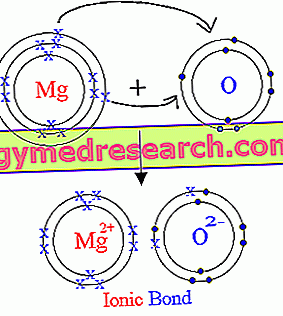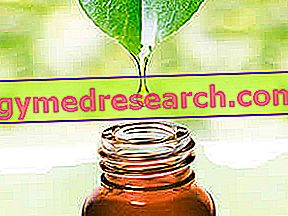What are face masks?
When we talk about the face mask we refer to a particular cosmetic product used to counteract some skin disorders or blemishes that affect the skin of the face.

To immediately stifle any possible "purely male" thought in the bud it is good to point out that the face masks, much appreciated by the female world, should not be considered a mere and sad whim to "appear".
Each face mask is in fact studied and perfected for a long time based on the type of skin it is destined for and the customer's requests.
The efficacy of the product is given by the wise association of the functional active ingredients incorporated in the recipe: the face masks can be made to hydrate, revitalize, tone, detoxify, purify, nourish, soften the skin or whatever. Many women rely on the similar therapeutic effect of face masks also to camouflage small imperfections - which, let's face it, are not very welcome even by men - such as scars left by acne or skin spots that visibly make a person look ugly.
Requirements
What are the essential requirements that a face mask should have?
The face masks are extremely appreciated both for their marked intensive effect and for the (relative) rapidity of action.
An ideal face mask must meet some essential requirements:
- Moisturize and soften in depth dry, dry skins and spoiled by the relentless advance of time;
- Protect the skin from external aggressions;
- Give elasticity to the skin of the face;
- Purify the skin thoroughly;
- Encourage the microcirculation of the face;
- Promote the penetration of active functional substances incorporated in the vehicle;
- Recharge the splendor of youth of the face.
Just like some quality moisturizers / nutrients, the face masks are specially designed to restore an altered skin hydrolipid balance and restore the physiological pH, protecting sensitive skin from atmospheric insults.
Those just described are just some of the countless positive effects promoted by beauty masks. There are endless types of face masks, each of which can be formulated with a specific combination of cosmetic and functional ingredients: these cosmetic preparations are generally customized, so as to fully satisfy the customer's needs.
Each face mask must be perfectly adapted to different skin types
Types of masks
As mentioned, there are different types of face masks that are characterized by different composition and also by different application methods.
These different types of masks can be classified according to the function they perform, or based on the formulation.
From a formulation point of view, the most commonly used face masks are probably those with two bodies and mask-creams.
The two-body face masks are "simply" composed of a vehicle (base) in which a mixture of functional active ingredients is incorporated. Most often, the vehicle is made from betonite, a material derived from volcanic rock that lends itself excellently to this purpose. This natural compound is, in fact, widely used as a base for face masks as it presents an extraordinary affinity / compatibility with many molecules. Moreover, by absorbing a generous amount of water, the betonite is easily transformed into a dense and gelatinous mass, so as to facilitate its application on the skin.
The active ingredients dispersed in the vehicle can be the most diverse: antioxidant, dermo-purifying, soothing, emollient, moisturizing, lightening, revitalizing extracts, etc.
The two bodies that characterize this type of face mask (vehicle and active substances) must be prepared separately and, only later, can be mixed.
Cream-masks, on the other hand, are simple, standardized and ready-to-use cosmetic preparations. In fact, they usually do not require any kind of preparation and should simply be applied to the skin.
Finally, there is another type of ready-to-use face mask that requires no preparation. These masks are characterized by the fact that the active substances are distributed on a solid support of cotton or cellulose ( fabric face mask ), specially shaped to adhere to the face.
Ingredients
As mentioned, the list of ingredients that can be included in a face mask is really long, almost endless.
During the creation of a face mask, the ingredients are carefully selected and mixed in different proportions according to the final result to be obtained.
Some of the main ingredients that can be included in the composition of a face mask will be briefly described below.
Moisturizing ingredients
The moisturizing ingredients, of course, are found in large quantities in the face masks with moisturizing action, but not only. In fact - since the maintenance of a good skin hydration is always fundamental for the well-being of the skin - these ingredients are also added to other types of masks (nutritious, emollient, anti-wrinkle, etc.).

Ingredients with nourishing and repairing action
The ingredients with nourishing and restorative action are very useful for restoring normal conditions in particularly dry skins, but also in mature skins. Ingredients of this type are vegetable oils and butters, such as shea butter and avocado oil.
Skin purifying and astringent ingredients
The ingredients with an astringent and dermo-purifying action are used in masks for impure and acne-prone skin. Among the ingredients of this type, we recall the extracts of green tea and clay.
Anti-aging ingredients
The anti-aging ingredients, of course, are used in masks whose purpose is to mitigate and / or prevent the signs of aging. Typical anti-wrinkle and anti-aging ingredients that can be found inside the face masks are hyaluronic acid and collagen.
Exfoliating and lightening ingredients
The exfoliating ingredients are used in face masks whose goal is to smooth the skin, removing impurities and dead cells, so as to give it a new radiance.
The lightening ingredients, on the other hand, are used in face masks indicated to counteract skin blemishes.
A typical ingredient with both exfoliating and lightening action is glycolic acid.
Mode of use
In addition to nourishing and moisturizing the skin, beauty masks are dermo-cosmetic treatments also designed to pamper the face: for this reason, before proceeding with the application of a mask, it is good to relax and carve out a small space of time to dedicate. to themselves (so that the spirit can also benefit from the physical ...).
Before application
The beauty masks must be applied to thoroughly cleansed and dry skins: all make-up remains must therefore be removed with specific make-up remover detergent and plenty of water, possibly lukewarm. Alternatively, the skin can be cleansed and the makeup removed by the use of micellar water. Before proceeding with the application of a mask it is therefore important to pay particular attention to cleaning the face.
In fact, the face mask can adhere perfectly to the face and the active ingredients can penetrate deeply only if the skin is thoroughly cleansed.
During the application
With the exception of the face mask in fabric that must simply be placed on the face, the two-body face mask (or cream mask, depending on the case) should be applied with a soft bristle brush or smeared with fingertips.
The mask must adhere perfectly to the skin of the face, without being too irritating or particularly sticky. In general, the product is applied starting from the chin, to then cover the neck and the whole face except for the eye contour and the perimeter of the lips.
During the laying time (normally between 15 and 20 minutes) it is advisable to apply a cotton pad on the eyes soaked in a decongestant lotion based on chamomile extracts. Alternatively, it is possible to place two slices of cucumber on the eyelids, with a flaming action (the remedy is particularly indicated to counter bags and dark circles under the eyes).
Some face masks (many, actually) dry up a few moments after being applied. These types of masks are very particular: the sensation that is perceived on the face is to wear a plaster mask. Other lighter face masks, on the other hand, remain moist and do not dry out completely (eg clay masks).
After the application
Once the necessary time has elapsed, the face mask must be gently removed with warm water. It is possible to facilitate the removal of the dense-dry mass with a soft sponge and with the hands.
As far as the face mask in fabric is concerned, in most cases it can be removed without the aid of water, since this type of mask generally does not dry out. However, depending on the type of fabric mask used, it may be necessary to rinse the face after removal.

Frequency of use
The recommended application frequency for face masks varies according to the type of skin, the functional ingredients present in the recipe and the customer's needs. While some face masks (such as moisturizers and emollients) can also be applied several times a week, others (especially exfoliating ones) should be used no more than once or twice a month. There are even extremely high-quality facial masks, made with 24-karat gold leaves: these last ones (with a clearly high cost and not always accessible, estimated at around $ 300) should not be used more than 1-2 times a year .
Results
The results that can be obtained with the use of a face mask are generally very appreciated by consumers.
In fact, these cosmetics are known to exercise what is called a "shock treatment".
For some face masks (such as moisturizers) the results are visible immediately; while for other face masks with more specific and targeted action (such as, for example, lightening), more applications may be necessary before obtaining visible results.
However, in general, in order to obtain really appreciable results, a face mask should still be used with constancy and regularity, respecting, of course, the frequency of use indicated by the manufacturer.



